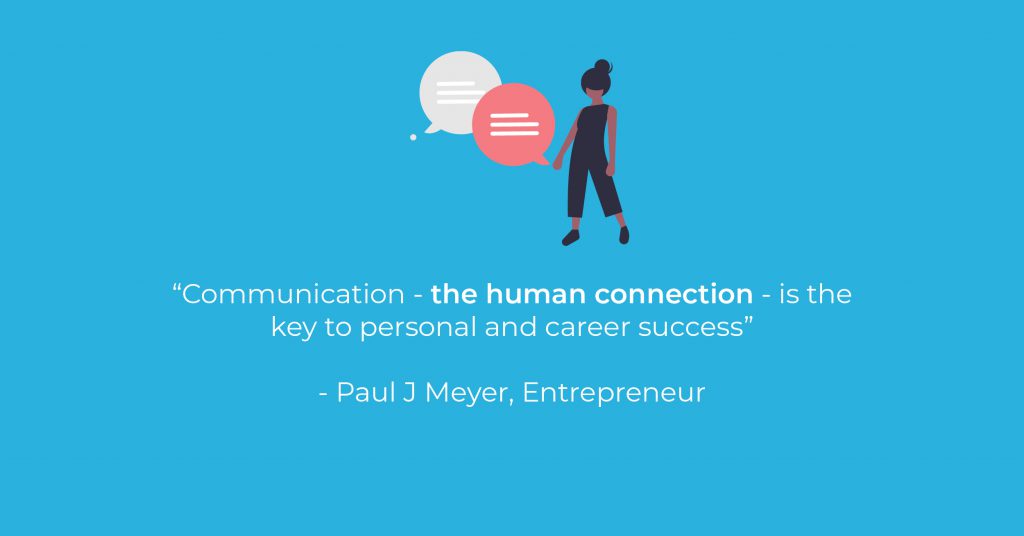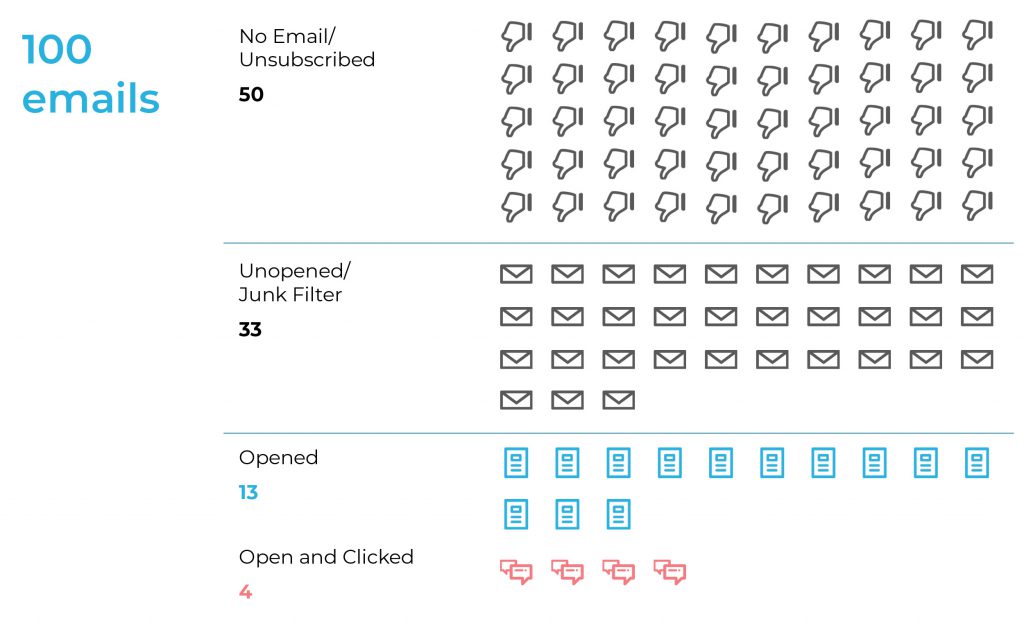
When time is money – or rather when productivity is money – precision is the name of the game. Productivity has never been about the bulk and the generic – in any other service process, a high-volume-low-personalisation output is normally considered the opposite of productivity because it generally equates to a poor experience and waste. Waste of output, waste of time, waste of money.
The point of innovation is to increase productivity and in the 21st century, your customer’s service expectation is a personalised one. I think most consumers have worked out that the brands filling up their inbox are not their friends. I love a good blog and I love a good robot as much as the next person but philosophically, the idea that you can “nurture” a connection with technology or automation is something I’m yet to resolve – and my experiences as a consumer tell me that I must choose trust and relationships again and again.
Personal connections are yielding extraordinary results in an increasingly impersonal world.

“Communication – the human connection – is the key to personal and career success.” – Paul J Meyer.
And yet, I know why we abdicated our personal touch to the ‘spray and pray’ approach to prospecting. Once we hit a certain number of clients, personal relationships become difficult to manage and the temptation to “scale” in the same way that industrial manufacturing “scales” was applied to relationship management. One email to 10,000 or more people – felt like magic. Small business owners, agents and marketers gained the power to broadcast with the rise of digital marketing and the ‘efficiency’ is addicting.
But it wasn’t without a trade-off. Disney movies and voodoo tell us there is a price to magic and with the rise of the email broadcast, the price we paid was precision. We lost personalisation and we lost the quality of the relationships we fostered.
When the people in our community, our relationships, became numbers – We started to accept percentages.

What do I mean by this?
If I had 5,000 people in my community which I organised into a database, then around half of these had email addresses. If I was only to communicate via email, then I accepted that I would only communicate with 50% of my community. Of the 50% that I could communicate with, my aim is to get at least an industry average of 26%* open rate. Which means that I accept that only 26% of 50% will SEE my communication. If I was hoping to ‘engage’ with that audience, the average percentage for real estate is 7.2%* so I’m only connecting with 7.2% of 50% of my database. Which is about 180 people. Of course, if your open and click rates are lower, you’ll be reaching even fewer people.
Source: Hubspot, May 2020.

Here is what that looks like for 100 emails. Whatever the gross number of contacts that I can email is, be it 100 or 5,000 there is no qualification of the ‘leads’ from email beyond their ‘click’ activity.
Are they homeowners? Are they email addresses from old buyer enquiry that is dormant in the database? Do they want a phone call? Are they selling? Are they the same 180 that always click through? How many of those people are real estate agents that have subscribed to my newsletter only to copy it next week? If I call those people, how likely are they to take my call? Will they know who I am? Will they trust me? How likely are they to call me, and just me, when it comes time to sell?
I’m not saying this strategy doesn’t have a place in marketing – it’s great if 180 people are reminded this week that you exist. But what I’m saying is that it is not personal; it does not nurture; it is not precise, and it is not different to what any of your competitors are doing or will do next week.
Commoditisation is where there is no means of differentiation across the supply of a good or service and the only remaining competitive battleground is price. But in personal service industries, like real estate, personal service is a competitive advantage – it is impossible for competitors to copy your relationships. Before the advent of data science and emergent technologies like artificial intelligence, it was also very difficult to scale. There are only so many hours in a day so to manually manage personalised service, there was a limit to how many people you could service, and a limit on how many of those would be selling each year.
The emergent field of data science and artificial intelligence that enables it has created an appropriate magic for real estate agents and other personal service providers. Data science allows for precision and human connection, at a scale that saves you time and allows you to earn more without an impossible workload.
By accessing and processing large tracts of customer data from multiple different sources, data science and artificial intelligence can help agents sync with the chaotic customer journeys of more and more people. Your customers are individuals and those journeys are both nuanced and emotional; they rarely follow a straight line.
The precision of data science gives agents the ability to contact the best possible people in their community, at the best possible time for the best possible reason, based on hyper-relevant and hyper-personalised messaging. Precision enables productivity.

Like all good ideas, the craft is often in the “HOW” because for many agents and small business owners, things like data science, big data, artificial intelligence and even more simply the personalisation of communication through technology feels like it is only accessible at the big end of town or that it would be too expensive to execute.
But it isn’t. The relationship data that already exists in the CRM (that you already own,) is one of the most underutilised assets in any real estate business and there is a cost to neglecting those relationships. In a 6 month study across a network of offices in 2019, that lost opportunity cost came in at $750,000 in commission lost to competitors, PER DAY.
In a deeper analysis, the salient feature across most of those lost opportunities was…disengagement. Disengaged data is when contacts go for 6 months or more without some personalised connection to an agent, and RiTA uses an artificial intelligence technique called natural language processing to diagnose this disengagement by separating out generic communication. The disengaged segment of the majority of databases is represented to us by RiTA in this graph, and for most offices – disengagement of the database sits at around 80%, without the help of intelligent technology and data science to help with relationship nurturing across the database.

RiTA, using these new techniques across the fields of data science, automation and artificial intelligence can analyse large amounts of agent and marketplace data, then synthesise information from those various data sources in a process that we can only equate to human super-thinking.
Our Ai platform for real estate agents, RiTA, can analyse data in the CRM as well as monitor the local market and then predict which individuals from the sea of contacts would be the best to connect with, on a daily basis.
By prioritising these suggestions, agents can confidently maintain relationships knowing that their precious time is applied where it will be most valuable.
That is how data science and Ai can help you personalise, at scale, for better relationships and more opportunity.


